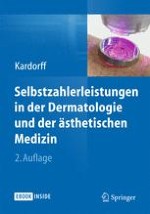2015 | OriginalPaper | Buchkapitel
30. Die Haarsprechstunde als IGeL-Konzept – Inhaltliche und strukturelle Grundlagen
verfasst von : Gerhard A. Lutz
Erschienen in: Selbstzahlerleistungen in der Dermatologie und der ästhetischen Medizin
Verlag: Springer Berlin Heidelberg











